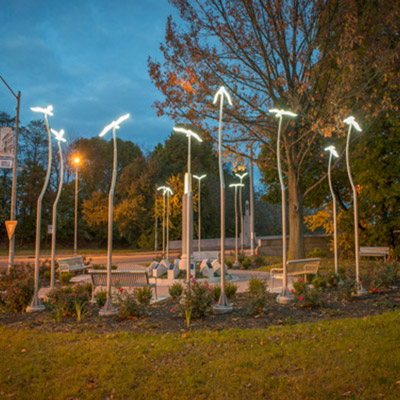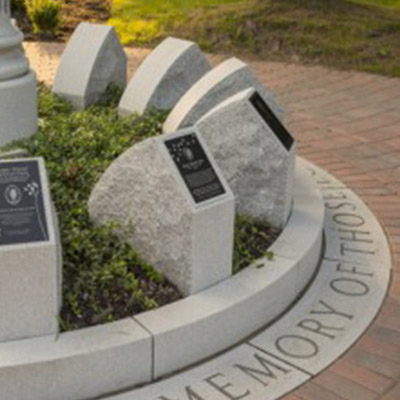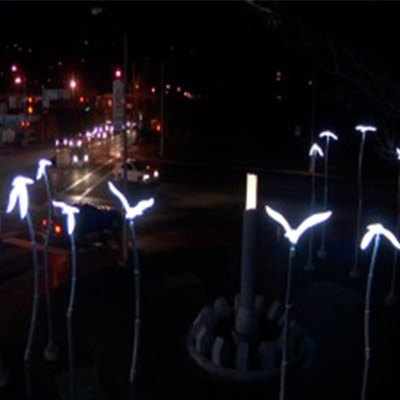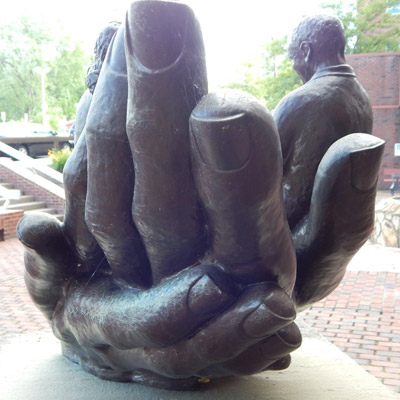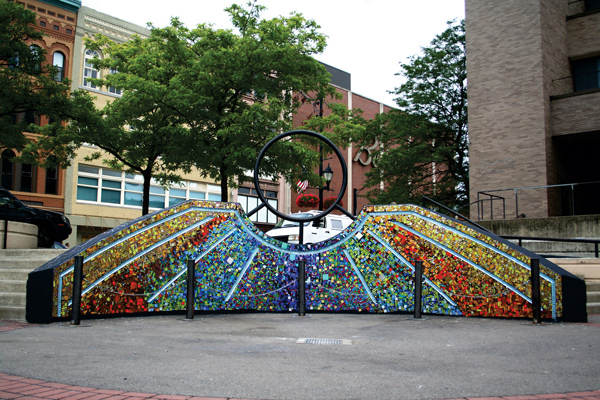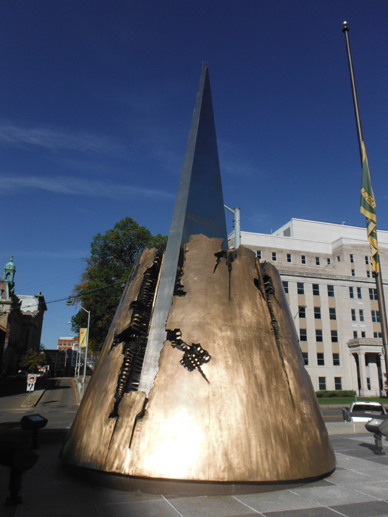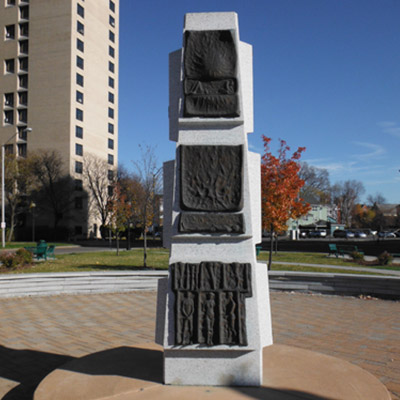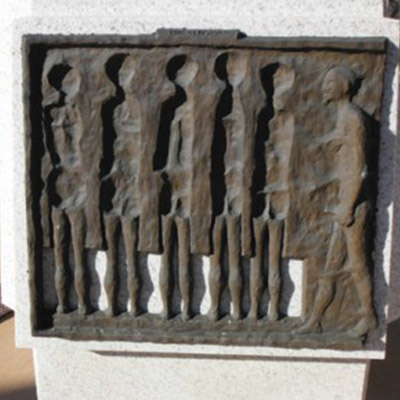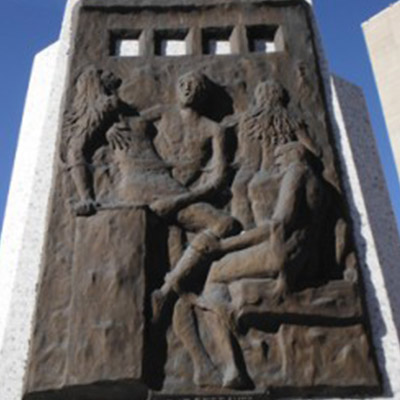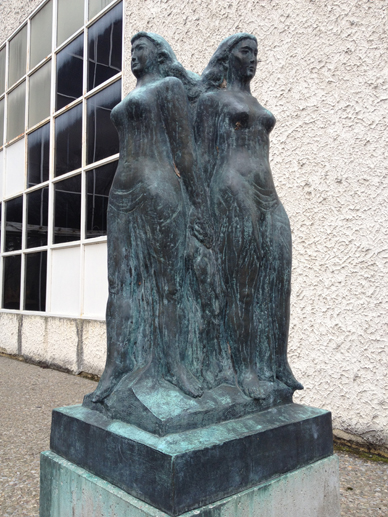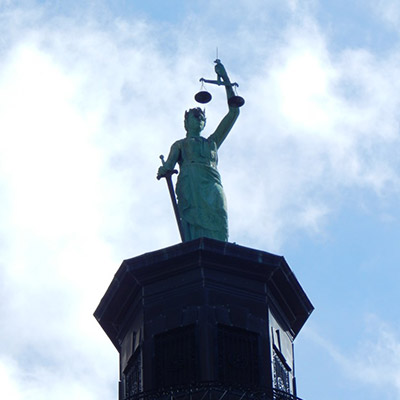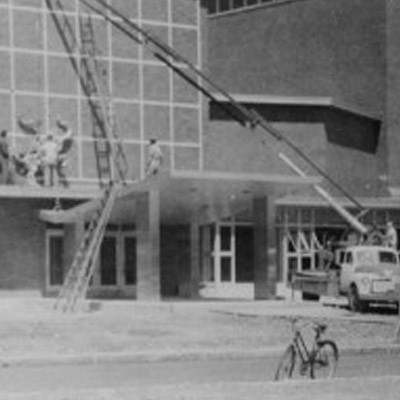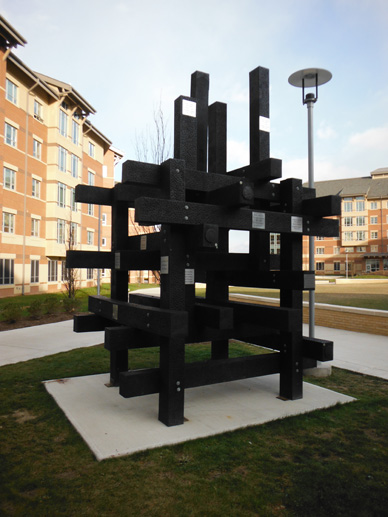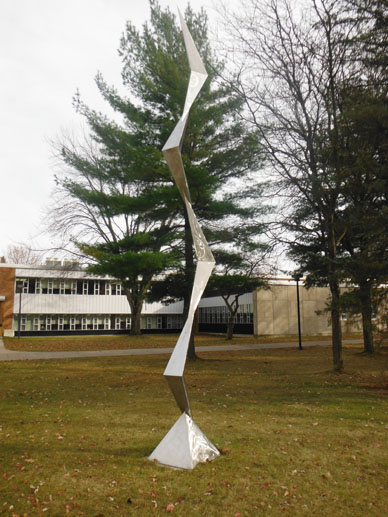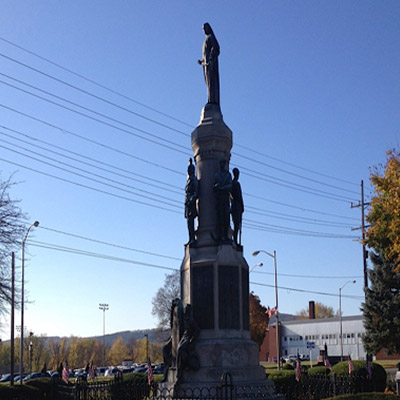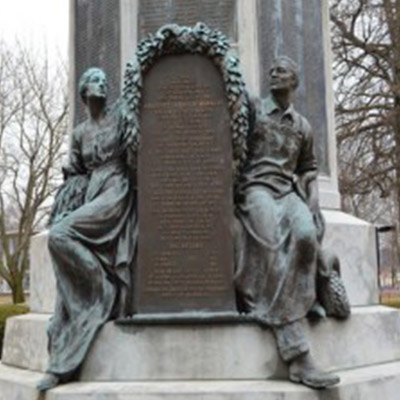Reviewed by George Basler
Judith Present’s War: What’s it For doesn’t deal with grand strategy, great battles or famous generals. Her characters are ordinary people caught up in the trauma of war that, while sometimes justified, is always ugly.
“I want to stress what happens to people’s lives during these times,” said Present, a Hancock-area playwright who has conceived and written the production that is being presented this weekend at Roberson Museum and Science Center in Binghamton.
The production’s format is a series of dramatic monologues covering the Revolutionary War, the Civil War and Vietnam. It’s a mixed bag. Some of the monologues are emotionally compelling while others are strident and overwrought. The Civil War and Vietnam sections are much stronger that the one on the Revolutionary War, which plays like a bad history lesson.
The Roberson production benefits immensely from a first-rate cast of 13 local actors and actresses, all of whom give fine performances. Another strong element is Trav’lin this Road, a group of local singers who specialize in spirituals and provide musical interludes between the monologues.
Present has said the production gives no opinions, leaving it up to the audience to decide for themselves, but that seems a bit disingenuous. The Vietnam section is clearly anti-war, emphasizing the futility and long-lasting emotional scars of that conflict. The Revolutionary War, by contrast, plays like a historical pageant with scrappy colonists against the big, bad British and their dastardly taxes.
While both interpretations have historical merit, that doesn’t alter the fact that Present is definitely taking a position.
As previously stated, the Vietnam section is the most emotionally compelling, possibly because it deals with a recent war for which the memories are still fresh. The monologues focus on the experiences of soldiers who fought the war, a nurse and the wife of a dead soldier who is searching for the half-Vietnamese child he fathered.
Present does a fine job in this section. The monologues are riveting. One particularly compelling one for me was done by Ernest Schenk who portrayed a Vietnam veteran who admits to the adrenaline rush of combat and confesses “I never felt so alive as is ‘Nam.” That can be an unpleasant truth about war but one that, if we’re honest with ourselves, has to be confronted.
The Civil War section focuses on the issue of slavery and contains one of the best monologues of the evening. Qiana Watson plays a black woman whose child has been taken from her and sold to another master. The monologue is heartbreaking in part because Watson gives a restrained interpretation, making the pain all the more real.
The monologue contrasts beautifully with one done by Bonnie DeForest who details the hardships faced by a Southern woman whose husband is away fighting. Her monologue is also heartbreaking in its way as the woman, as deluded and wrongheaded as she may be, deals with her own pain.
Kudos also goes to Ray Patton as a Southern soldier recounting the death of a close friend who went to fight for the Union cause. It was wonderfully done.
Indeed the whole cast deserves applause. In addition to those already mentioned, the are Nick DeLucia, Maryann Johnson, Charles Berman, Eileen Harahan, Foster Daniels Jr., Adara Alston, John Carey, Tony Yajko and Lane Laneluangxay.
The four popular local singers who make up Trav’lin this Road are Brenda Cave-James, Jessie Beale, Saburah and Lauren Blair, although I saw only three on the stage Friday night. I’m sorry to report I don’t know who was absent.
While War: What’s it For? is not totally successfully, there is much to admire in the effort. The highs definitely outweigh the lows. It’s hardly a light night out in the summer, but some of the monologues will stay with you.
War: What’s it For’s three-day run will conclude with a 2 p.m. Sunday performance (Aug. 4) in the Roberson Museum Carriage House, 30 Front St., Binghamton. Tickets at $12 (students and veterans, $10) are available at the door.




